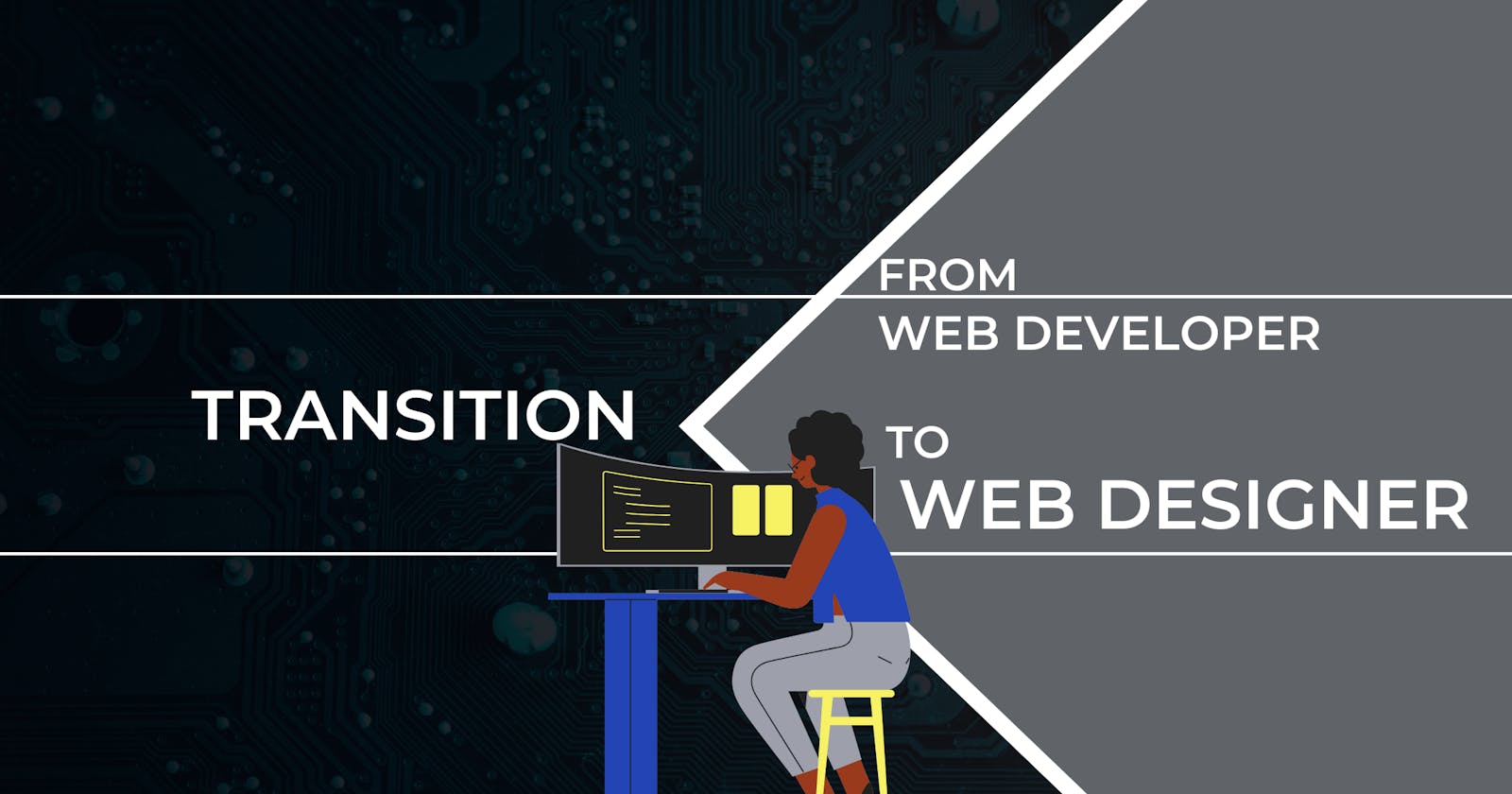How to Transition from Web Developer to Web Designer UI/UX Designer
Skills, Course and what not? Practice To Be Web Designer
Are you a web developer looking to transition to a web designer?
If so, then you’ve come to the right place! Making the shift from web developer to web designer can be a daunting task.
From understanding design principles to learning how to use design software, it can seem overwhelming.
But don’t worry – this blog post will help you better understand what the transition entails and provide tips, web design courses, skills and tricks for making the switch.
Read on for helpful advice about transitioning from web development to web design!
Defining the Difference Between a Developer and a Designer
When it comes to web development, there is a big distinction between developers and designers.
Developers are responsible for the functionality of the site, while designers are responsible for the visual appeal.
The two roles often overlap, but they require different skill sets. Developers need to be able to code, while designers need to have an eye for aesthetics.
If you're interested in transitioning from web developer to web designer, it's important to first understand the difference between the two roles. Once you have a clear understanding of what each role entails, you can start to develop the skills necessary to succeed in your new career.
The Necessary Skills for Web Design
Web design and development are two different but equally important aspects of creating a website.
A web developer is responsible for the code that makes a website work, while a web designer is responsible for the look and feel of a website.
To be a successful web designer, you need to have both technical and creative skills.
Technical skills are important for understanding how websites are built and how to create designs that are compatible with different browsers and devices.
You should also be able to understand how to use different web development technologies, such as HTML, CSS, and JavaScript.
Creative skills are important for creating attractive and user-friendly designs.
You need to have an eye for detail and be able to come up with original ideas that will make your website stand out from the rest.
You should also be able to effectively communicate your ideas to clients or team members.
Making the Transition
If you're a web developer who's interested in transitioning into web design, there are a few things you need to know.
First and foremost, while the skill sets required for both disciplines overlap to some extent, they are still quite different. As such, it's important to understand what the key differences are between the two before making the switch.
Web developers typically focus on the back-end development of websites, whereas web designers focus on the front-end design.
That said, web developers need to have a good understanding of design principles to create websites that are both functional and visually appealing.
When transitioning from web developer to web designer, it's important to brush up on your design skills.
This means learning about typography, color theory, and layout principles.
You'll need to be proficient in industry-standard design software such as Adobe Photoshop and Illustrator.
Making the transition from web developer to web designer can be a challenge, but it's doable with the right approach. By understanding the key differences between the two disciplines and honing your design skills, you'll be well on your way to success in this new field!
Tips for a Successful Transition
When making the transition from web developer to web designer, there are a few things to keep in mind to make the process as smooth and successful as possible.
First and foremost, it is important to remember that while the two roles are similar, they are also quite different, so be prepared for a bit of a learning curve.
Secondly, take the time to brush up on your design skills and familiarize yourself with the various design software programs that are out there.
Finally, don’t be afraid to reach out to other designers for advice and guidance – they’ve all been through the same transition and can offer valuable insight into what works and what doesn’t.
Resources for Learning Web Design
The internet is full of resources for learning web design. You can find free tutorials and articles online, as well as paid courses and training programs.
Some of the best resources for learning web design include:
1. W3Schools - W3Schools is a popular website that offers free tutorials and references on HTML, CSS, JavaScript, PHP, and more.
2. Codecademy - Codecademy offers free interactive courses on HTML & CSS, JavaScript, jQuery, Ruby on Rails, and more.
3. Linkedin Learning is a leading online learning platform that offers video courses on web design, graphic design, photography, and more. Prices start at $25/month.
4. Udemy - Udemy is an online learning platform with over 55,000 courses on various topics including web design, web development, digital marketing, and more.
Conclusion
Transitioning from web developer to web designer doesn’t have to be a daunting task. But worth doing if you want to be in a more creative space with the benefits that web design offers.
By taking the time to research and understand the differences between the two roles, recognizing the skills you’ll need, and staying up-to-date on relevant tools, trends, and terminology in design, you can make your transition smoother.
With some practice and dedication, you can make yourself into an excellent web designer who is ready for new challenges.
